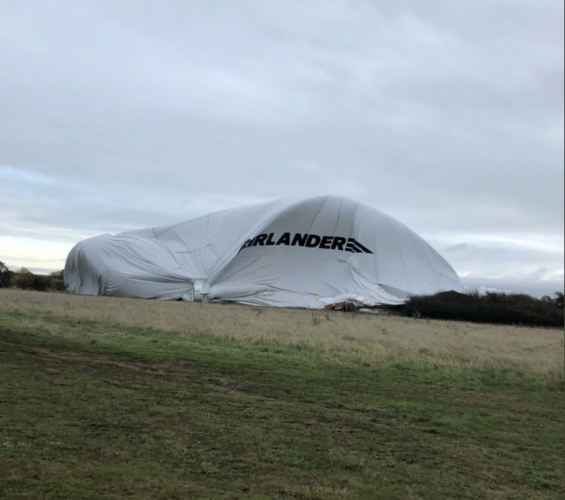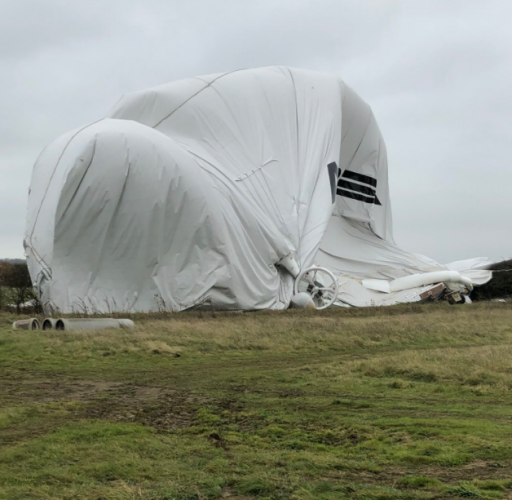
(Credit: Beds, Cambs & Herts Roads Policing Unit via Twitter)
The airship - which just a day earlier had embarked on a new phase of testing - has an onboard safety system that rips open the hull automatically to deflate the vessel in such circumstances. Airlander is now deflated and secure on the side of the Cardington airfield where it is based, with its fuel and helium made safe. According to Hybrid Air Vehicles (HAV) – the company behind Airlander - two members of its staff sustained minor injuries during the incident. Some local roads and a footpath were also temporarily closed by Bedfordshire Police.
“A member of HAV staff sustained minor injuries and was taken to hospital for assessment as a precaution,” read a company statement. “She has since been discharged. A separate member of staff also sustained minor injuries while dealing with the aftermath of the incident.”
On Friday, Airlander 10 had completed the first flight of Airworthiness Release 2a (AWR2a), a new test regime that will see the aircraft’s capabilities pushed further than before. According to HAV, the European Aviation Safety Agency (EASA) had validated the test data from initial flights and agreed that the airship was safe to fly in a wider range of conditions. AWR2a permits Airlander to fly higher (up to 7000 feet), faster (up to 50 knots) and further away from its airfield (up to 75 nautical miles away), and also allows the aircraft to undertake display and demonstration activity.

(Credit: Beds, Cambs & Herts Roads Policing Unit via Twitter)
Several modifications were carried out ahead of the new test phase, including attaching a fairing between the hull and the mission module to reduce drag at higher speeds.
In August 2016, Airlander suffered what was described as a 'heavy landing' on its second test flight.
HAV said it will now conduct an an investigation into why the aircraft broke free from its mooring mast.
“We are testing a brand new type of aircraft and incidents of this nature can occur during this phase of development,” the company said. “We will assess the cause of the incident and the extent of repairs needed to the aircraft in the next few weeks.”




Red Bull makes hydrogen fuel cell play with AVL
Formula 1 is an anachronistic anomaly where its only cutting edge is in engine development. The rules prohibit any real innovation and there would be...